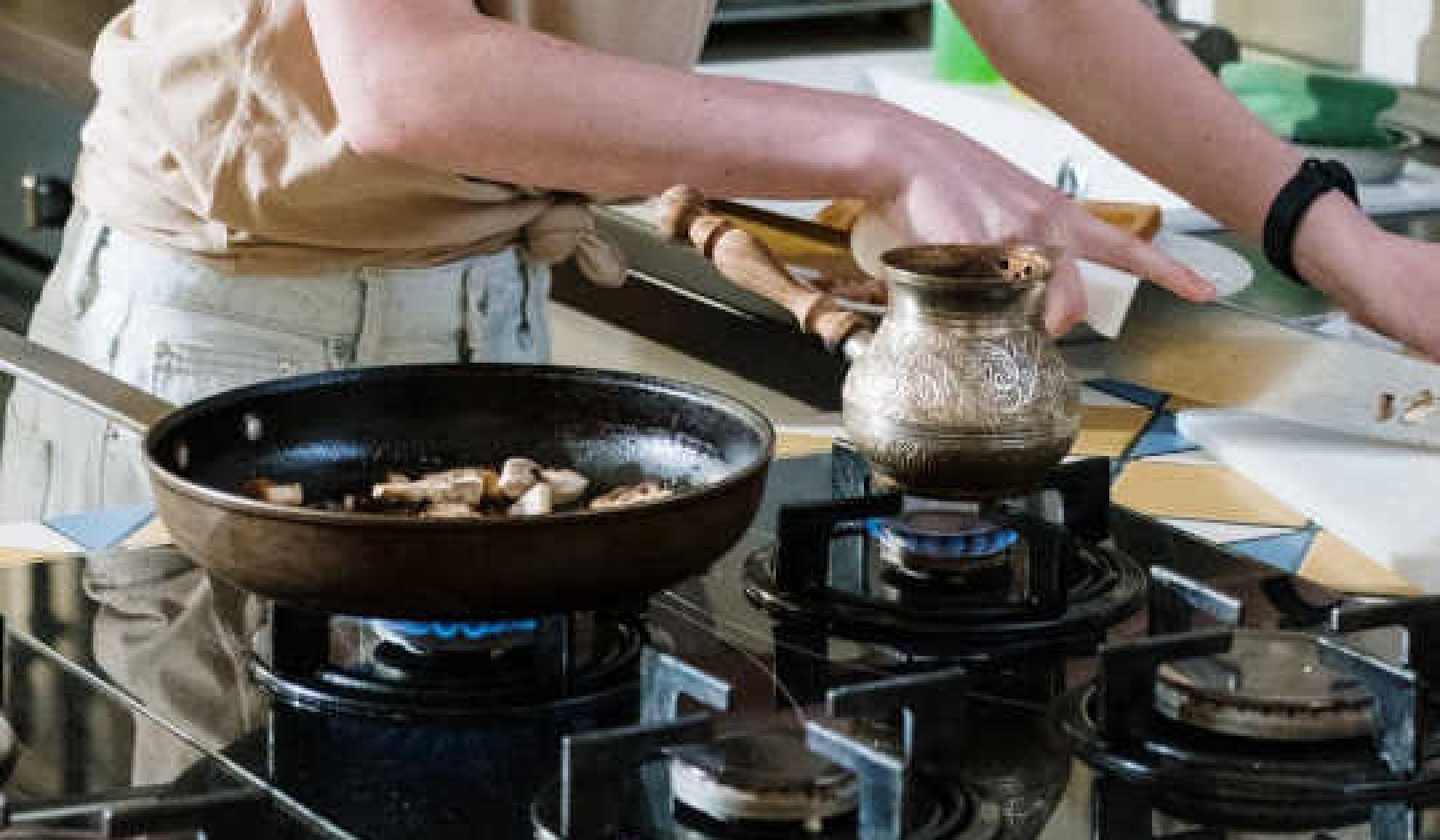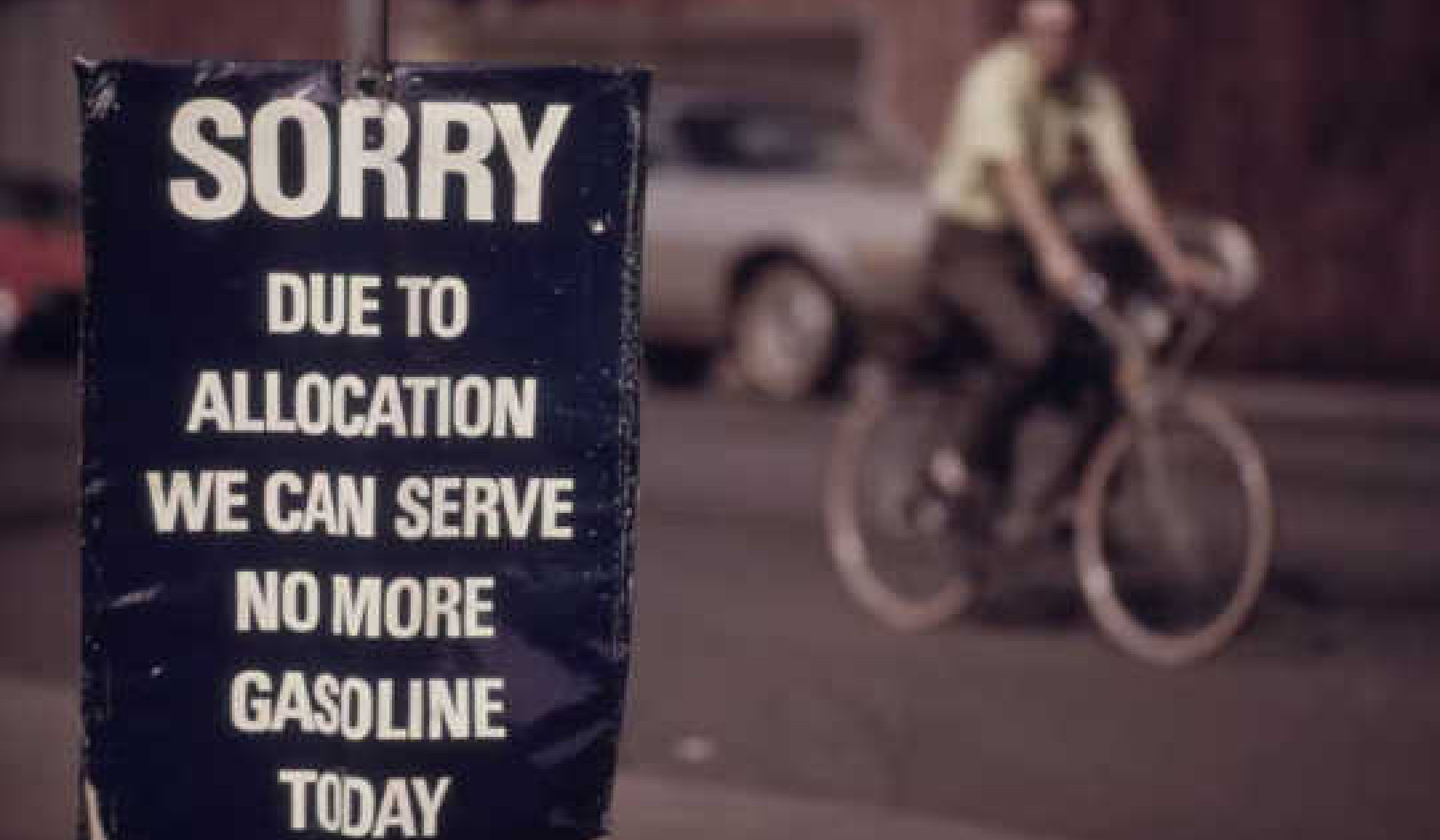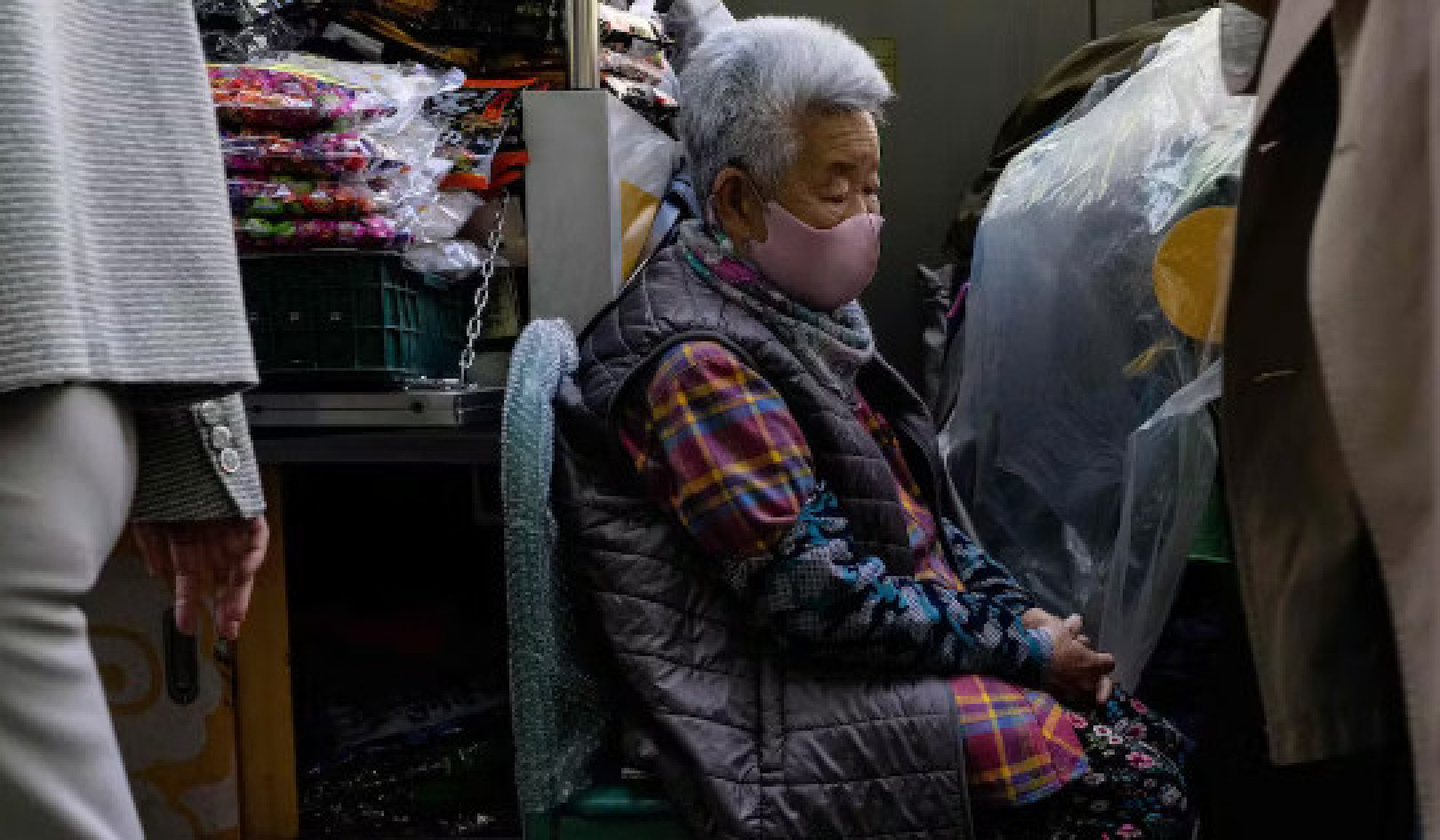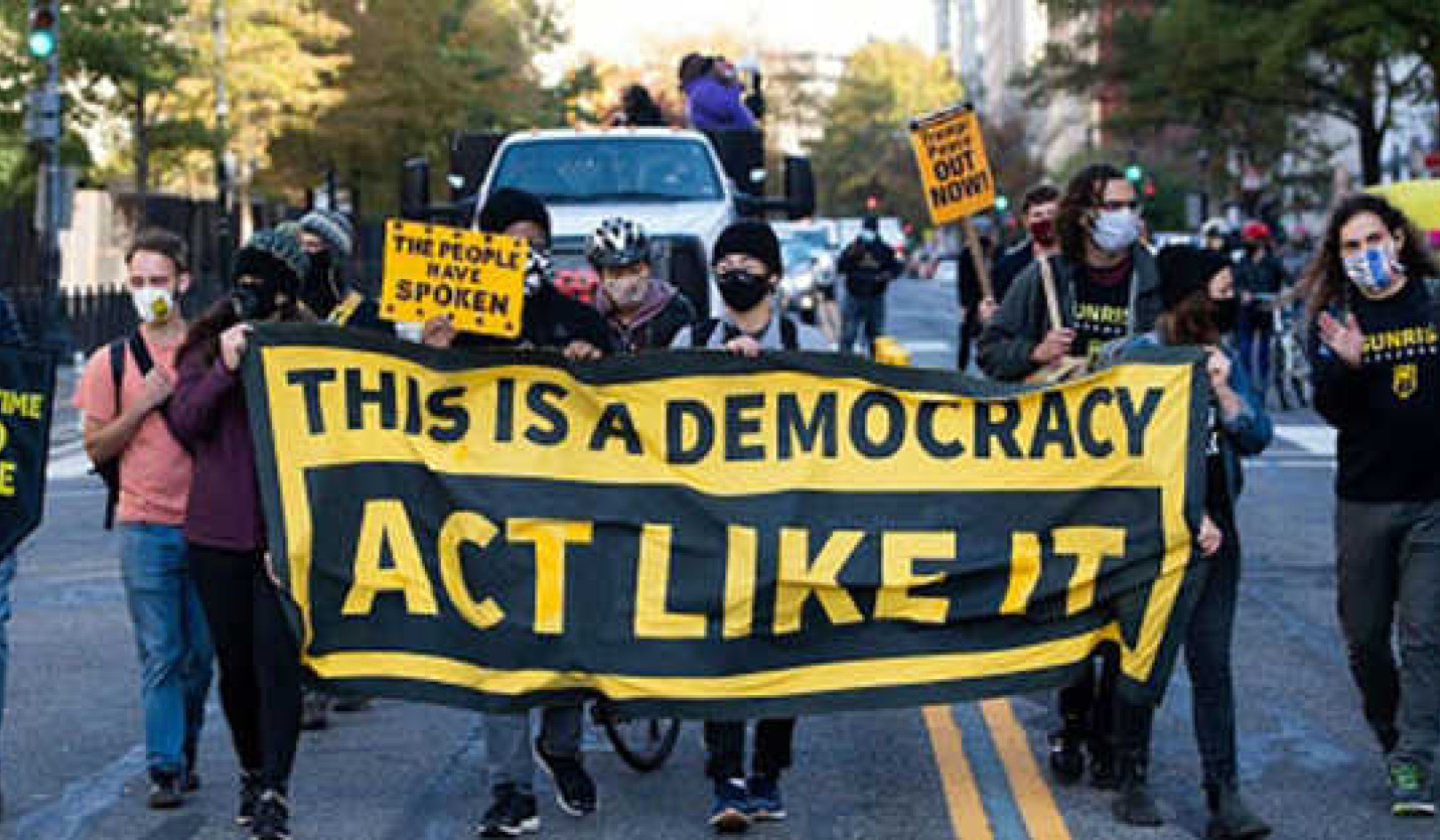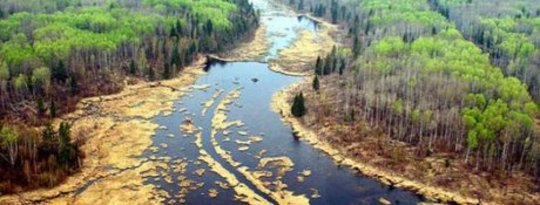
Nine weeks ago, oil near a tar sands extraction site in Cold Lake, Alberta, Canada, began to leak and ooze from the ground. It is currently wending its way through a nearby swampy forest, blackening vegetation and killing wildlife. It shows no signs of stopping. Even worse, scientists have no idea where it's coming from or what to do about it.
Twenty-six thousand barrels of watery oil have already been removed from the area, but the efforts seem to be fruitless given the fact that as of now, the gushing crude cannot be stopped, and the actual source of the leak is unknown. The leak began, however, after Canadian Natural Resources Ltd. began extracting oil from beneath the ground by injecting ultra-hot, high-pressure steam into it, which allows crude to be pumped to the surface. It's called "cyclic steam stimulation (CSS)" in the industry, but concerned environmentalists will undoubtedly think of fracking, another practice that tampers with the earth, in that case to extract natural gas.
CSS was introduced by Shell, the big oil corporation with a filthy legacy of criminal action and environmental destruction, and has only been in heavy use in recent years, particularly in California and Venezuela. Along with train explosions, drilling rig blowouts, and leaking pipelines, all of which have occurred this year, CSS is another operation that can be added to the list of bad ideas.
"Everybody is freaking out about this," said a scientist who had been to the spill site. "We don't understand what happened. Nobody really understands how to stop it from leaking, or if they do, they haven't put the measures into place."
Bob Curran, a spokesman for Alberta Energy Regulator, a government agency that oversees oil operation sites, said what experts do know is that the leak is basically the result of "cracks in the ground," with "bitumen emulsion seeping out of those cracks." But they have so far been unable to pin down those cracks. "The challenges are basically figuring out what happened and then how to stop it."
Nikki Booth, spokesperson from Alberta Environment and Sustainable Resources Development, said, "We do know some animals [in the affected area] have already died, including waterfowl; beavers; tadpoles and frogs; and shrews."
Alberta Energy Regulator has since ordered Canadian Natural Resources to cease all operations until the leak is stopped.
The seemingly innumerable cases-in-point as to why oil and gas extraction are highly dangerous merely add fuel (so to speak) to the fire in terms of the Keystone XL project, which has infuriated environmental activists. President Obama said that that pipeline, which would transport crude from Alberta to the U.S., would be subjected to a study on whether it would increase greenhouse gas emissions, before being approved.
Chris Severson-Baker, managing director of clean energy advocacy group the Pembina Institute, remarked, "At this point, what can actually be done to prevent the leak from continuing to occur? I don't think there's anything. They don't even know whether this emulsion has impacted groundwater."
"This is a new kind of oil spill," agreed Greenpeace energy analyst Keith Stewart. "And there is no 'off' button. You can't cap it like a conventional oil well and you can't turn off a valve like on a pipeline." With CSS, he added, "you're pressuring the oil bed so hard that it's no wonder that it blows out. This means the oil will continue to leak until that pressure is relieved, which means the bitumen could be seeping from the ground for months."
Article Source: People's World
Alberta Leaks Prompt Questions Over Oilsands Extraction
CBC NEWS - Bitumen emulsion continues to leak into a section of Boreal forest in northeast Alberta owned by Canada's military, raising concerns about "huff and puff" extraction technology as industry experts attempt to determine the cause of the ongoing spill.
There have been four leaks at Canadian Natural Resources Ltd's Primrose Lake site on the Cold Lake Air Weapons Range since May 20. The site is near the Saskatchewan border but is restricted to CNRL staff, contractors, and government investigators, meaning the extent of the damage isn't widely known.
It Can't Happen Here? But it IS Happening There!
Tar sands oil has been leaking into the Alberta, Canada countryside for months now - but the operators of the broken pipeline still have no idea where the oil is coming from - or how to stop the leak. Shouldn't this disaster up North be a wake-up call to us all - about the future America faces if the Keystone XL pipeline is approved?
{youtube}1wbfOGPbWAQ{/youtube}























